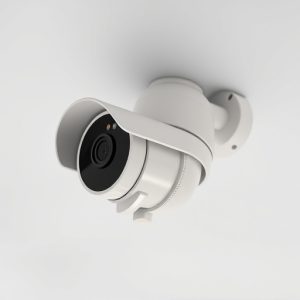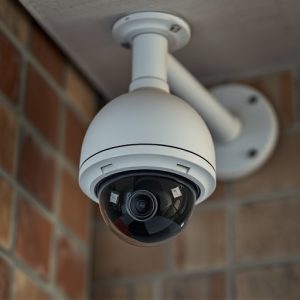Unveiling Truth: Are Fake Security Cameras Worth It? Dome vs Bullet
In today's digital age, affordable security alternatives like fake camera brackets are popular……..
In today's digital age, affordable security alternatives like fake camera brackets are popular. This text compares fake dome and bullet cameras, highlighting that dome cameras offer superior discretion and broader fields of view but require professional installation due to fixed lenses. Bullet cameras, however, provide enhanced durability and clear outdoor images with adjustable angles, making them better for visible deterrence and easier installation. The ideal choice depends on whether one prioritizes discreet indoor monitoring (dome) or visible outdoor deterrence (bullet).
In today’s digital era, security camera systems are a vital tool for home and business protection. However, among the variety of options available, understanding the difference between fake security camera mounting brackets and genuine ones is crucial. This article delves into the world of dome and bullet cameras, exploring their unique advantages and disadvantages. We’ll guide you through choosing the best option, highlighting why one might be a better fit than the other in terms of effectiveness and cost-efficiency: fake dome or bullet camera systems.
- Understanding Fake Security Camera Mounting Brackets
- Advantages of Using Dome Cameras Over Bullet Cameras
- Disadvantages and Potential Issues with Dome Cameras
- Choosing Between Dome and Bullet Cameras: Key Considerations
Understanding Fake Security Camera Mounting Brackets
Fake security camera mounting brackets are a common sight in today’s digital era, with many homeowners and business owners opting for affordable alternatives to traditional security systems. These brackets often come in two primary forms: fake dome or bullet cameras. While both serve as decoys to deter potential thieves, they each have unique advantages.
Fake dome cameras mimic the look of real surveillance equipment, placing them strategically on walls or ceilings to create an illusion of comprehensive monitoring. On the other hand, bullet cameras, with their sleek and distinctive design, offer a more subtle approach, blending seamlessly into various environments. Understanding these differences is crucial when selecting the right mounting bracket for your security needs, ensuring that you get the best value for money while enhancing the overall effectiveness of your home or business security system.
Advantages of Using Dome Cameras Over Bullet Cameras
Many security professionals and homeowners often debate the merits of using dome cameras versus bullet cameras, especially when it comes to enhancing security in residential or commercial spaces. While both types serve the primary function of surveillance, there are distinct advantages to choosing a fake dome camera over its bullet counterpart.
One of the key benefits is the aesthetic appeal and discreteness that dome cameras offer. Their design allows them to blend seamlessly into the environment, often resembling real light fixtures or ceiling components. This stealthy approach can deter potential thieves or vandals from targeting the device directly, as they may not realize it’s a surveillance tool. In contrast, bullet cameras, with their prominent shape and structure, might attract unwanted attention, making them less ideal for areas where a low-profile security system is desired. Additionally, dome cameras provide a wider field of view, ensuring comprehensive coverage without the need for multiple installation points, thus simplifying the setup process.
Disadvantages and Potential Issues with Dome Cameras
While dome cameras are popular for their aesthetic appeal and wide field of view, they come with several disadvantages. One major issue is their vulnerability to tampering due to the fixed lens design. This means that a determined individual could potentially disable or manipulate the camera, rendering it ineffective as a security measure. Moreover, dome cameras often require professional installation, adding cost and complexity to the setup process.
Another potential problem with dome cameras is their limited flexibility in terms of angle adjustment. Unlike bullet cameras, which offer adjustable mounting options, dome cameras are typically fixed, making it harder to precisely align the camera for optimal coverage. This can lead to blind spots or inadequate surveillance in certain areas, undercutting the overall security provided by the system. Considering these factors, many security professionals suggest that fake dome or bullet cameras can be a better choice due to their enhanced durability and adjustable mounting capabilities, ensuring comprehensive protection and easier installation.
Choosing Between Dome and Bullet Cameras: Key Considerations
When selecting a fake security camera, one of the initial decisions is between dome and bullet camera styles. Each has unique advantages that cater to different needs. Dome cameras offer a sleek, discreet design ideal for indoor applications where aesthetics matter. Their wide field of view provides comprehensive coverage, making them suitable for monitoring larger spaces. On the other hand, bullet cameras stand out with their compact, durable construction, perfect for outdoor use or environments requiring enhanced durability.
The choice between a fake dome or bullet camera depends on your priority: discretion or visibility. Dome cameras blend seamlessly into their surroundings, while bullet cameras, with their distinct shape, act as visible deterrents, providing clear, focused images. Consider your environment and the level of discretion required for optimal security.
When deciding between fake dome and bullet cameras, understanding their unique advantages and disadvantages is key. Dome cameras offer discreetness and versatility, making them ideal for residential settings where a subtle presence is preferred. On the other hand, bullet cameras provide enhanced visibility and durability, suitable for commercial applications requiring robust surveillance. Ultimately, the ‘fake’ aspect of these brackets allows for flexible installation options while ensuring either discrete or prominent security coverage, catering to diverse needs in today’s digital era.

